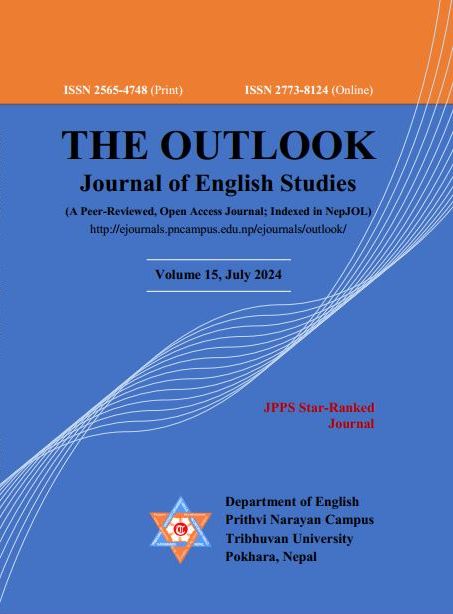The Performative Body in Ibsen’s A Doll House and Saput’s Sakambari: Rebelling and Reclaiming Women’s Power Dynamics
DOI:
https://doi.org/10.3126/ojes.v15i1.67757Keywords:
Gender inequiality, gender performativity, performative body, feminist resistanceAbstract
Henrik Ibsen's A Doll House, directed by Bernice Garfield-Szita and Prakash Saput's Sakambari showcase a similar performative body of women, resisting the patriarchal societal system despite having existed in two distinct spatiotemporal contexts. In this light, the paper comparatively examines the performative bodies of Nora in A Doll House and Sakambari in Sakamabari to analyze how their body acts serve as a site of submission and resistance simultaneously. In doing so, the study employs qualitative methods, mainly textual analysis for visual texts, lyrics, and dialogues in a multi-modal approach, using the Butlerian concept of gender performativity, "not biology but culture," and the Foucauldian concept of body and sexuality. It examines how the performing bodies epitomize submissive and resistive agencies for autonomy and justice. Nora's and Sakambari's performative bodies in different phases – the plain, commodified, and beyond – in one way to another challenge the masculine disposition and advocate for liberation. The analysis reveals that the two characters employ contrasting approaches to resisting the existing social structure. Nora exhibits direct submission and defiance, while Sakambari explicitly submits and implicitly resists. While both of them challenge the status quo of society, the performative bodies in different layers of resistance empower them to contest patriarchal societal foundations even though their paths to liberation differ from one another.
Downloads
Downloads
Published
How to Cite
Issue
Section
License

This work is licensed under a Creative Commons Attribution-NonCommercial 4.0 International License.
This license enables reusers to distribute, remix, adapt, and build upon the material in any medium or format for noncommercial purposes only, and only so long as attribution is given to the creator.

